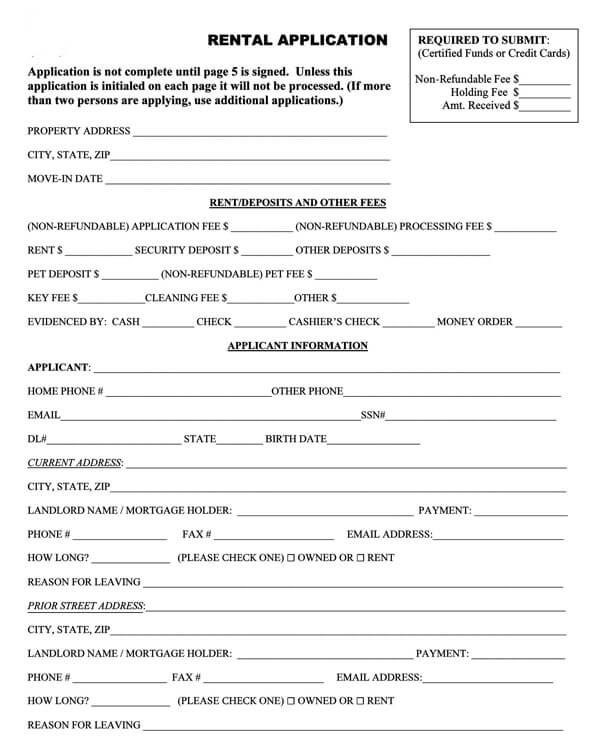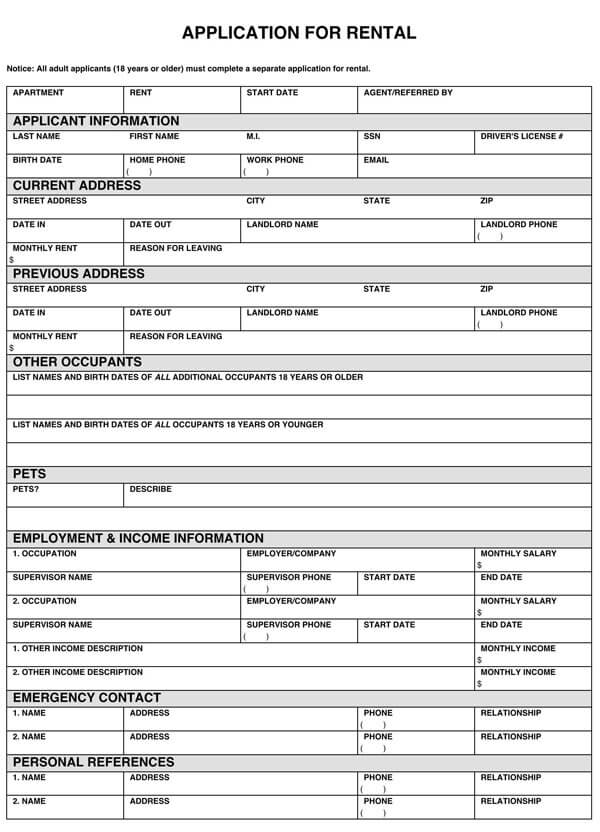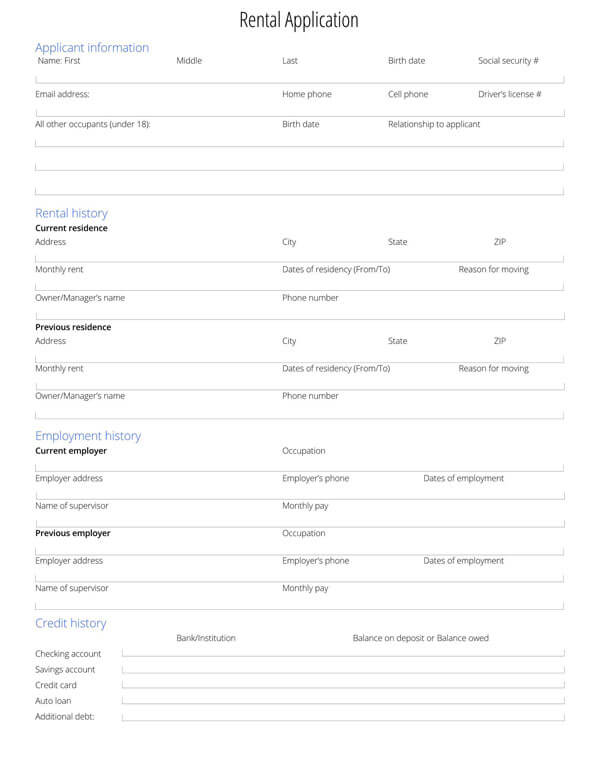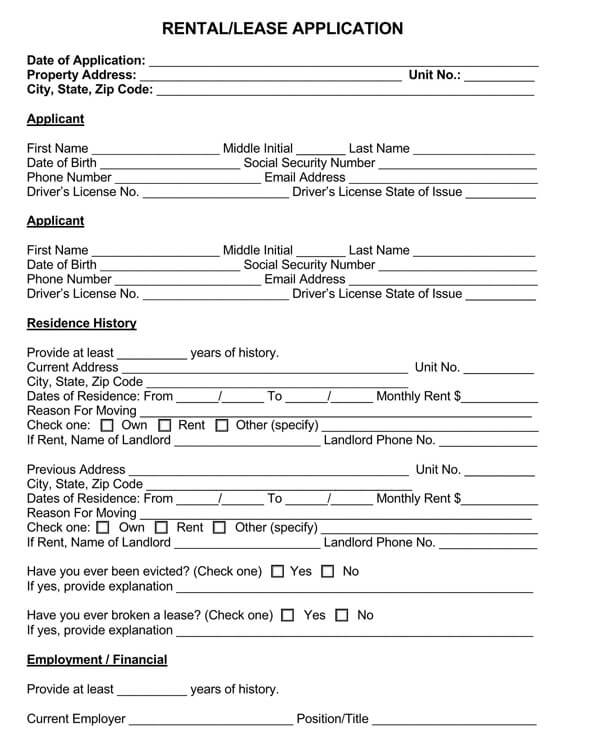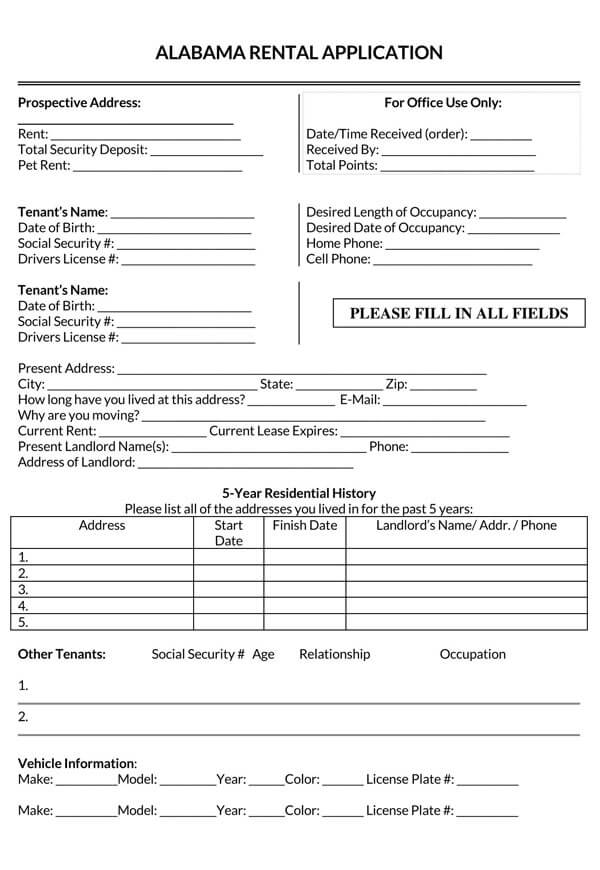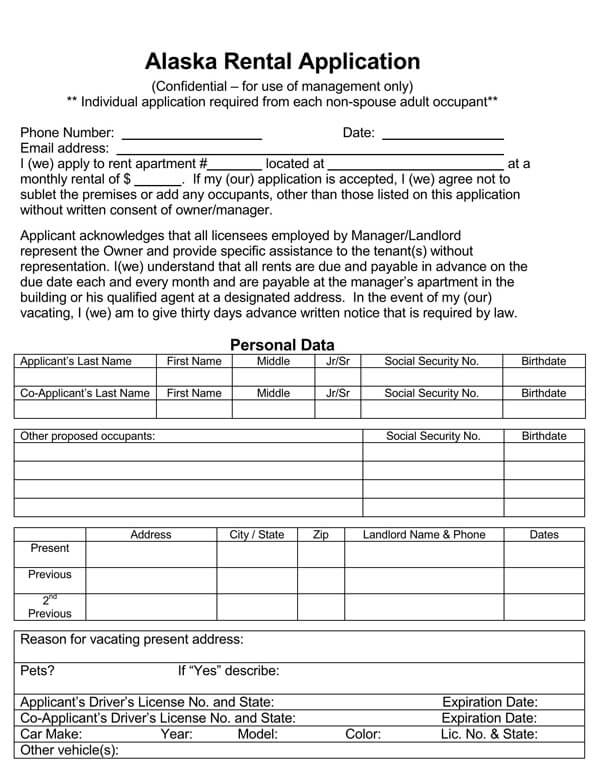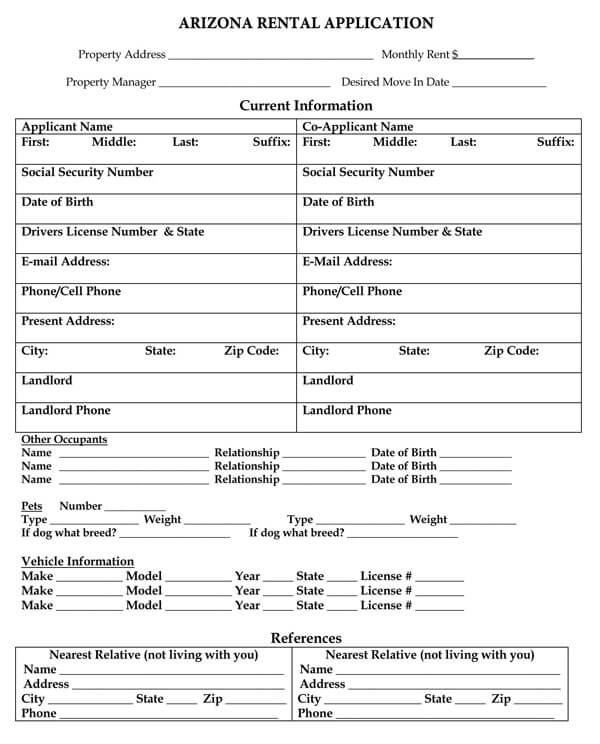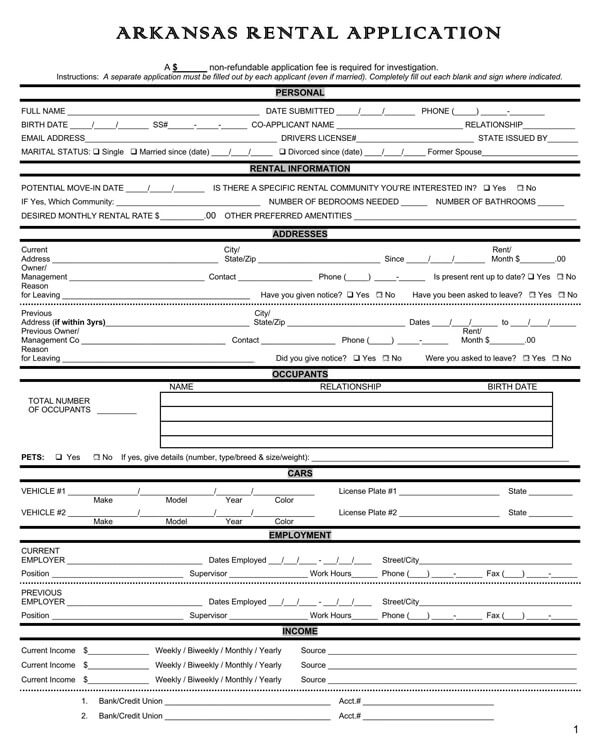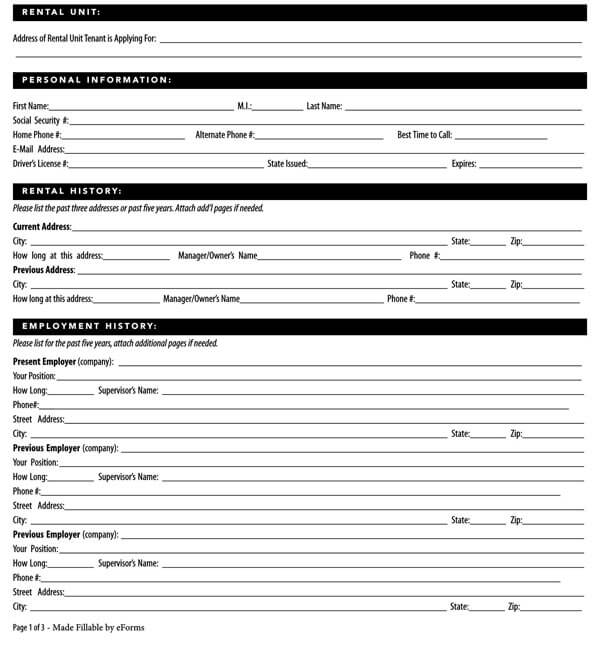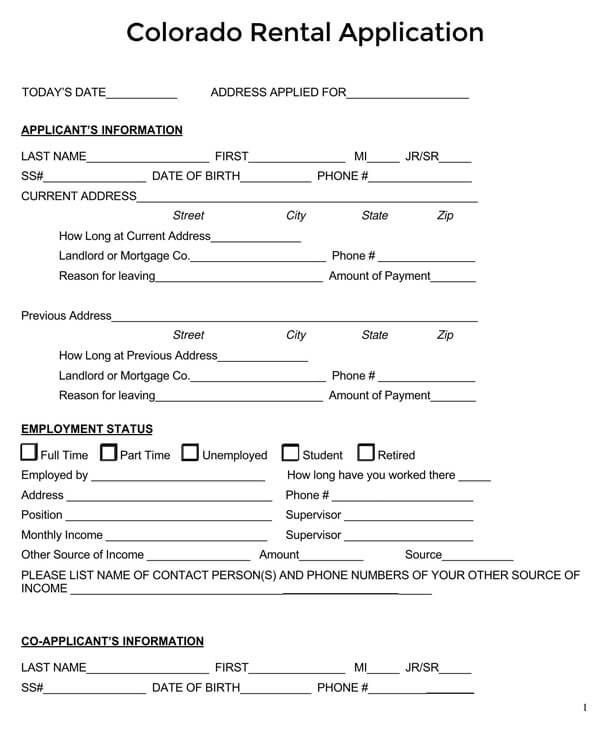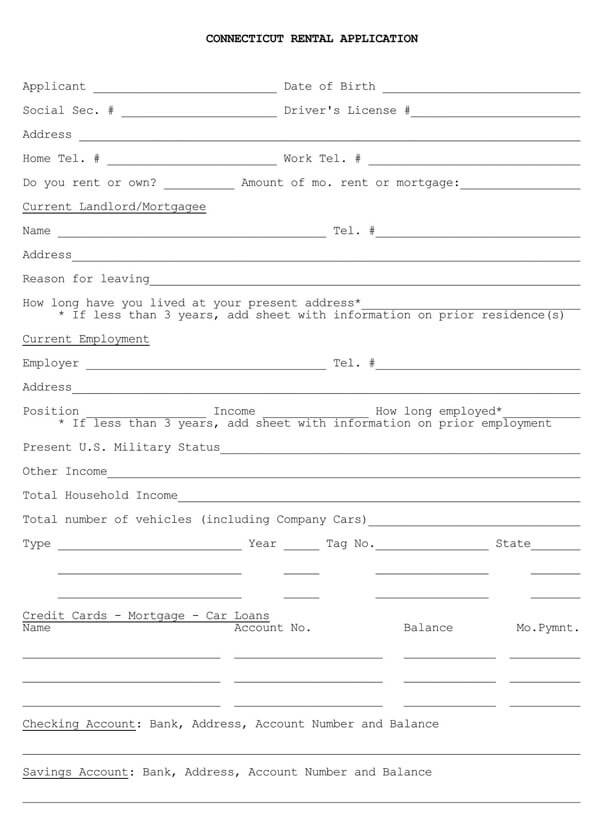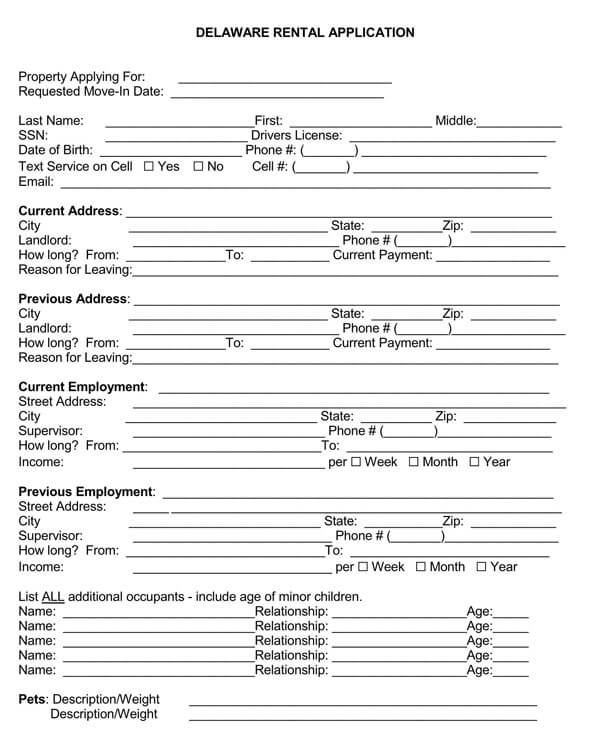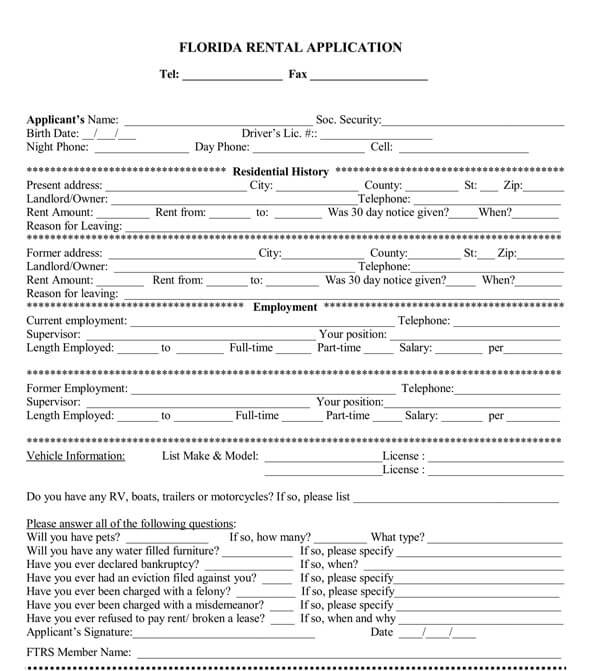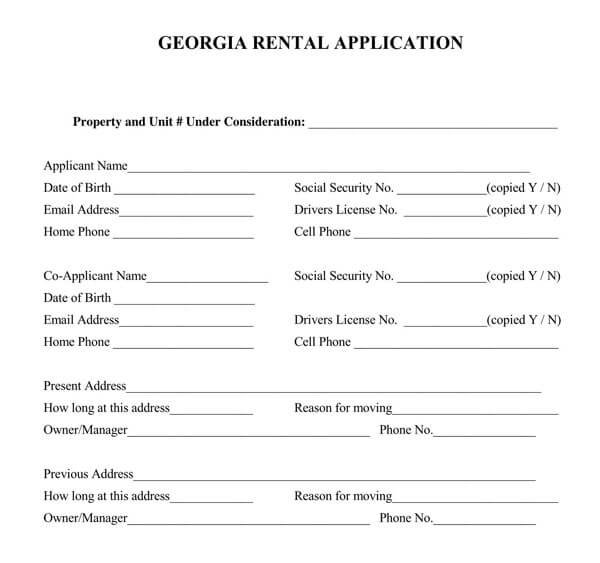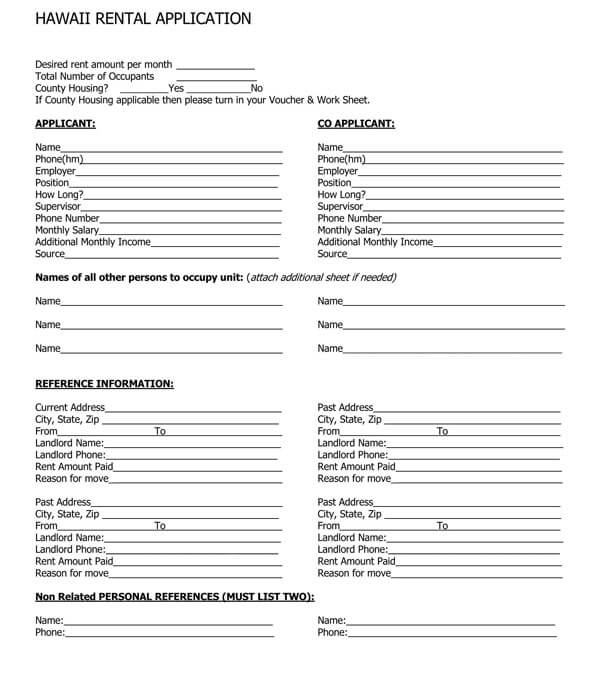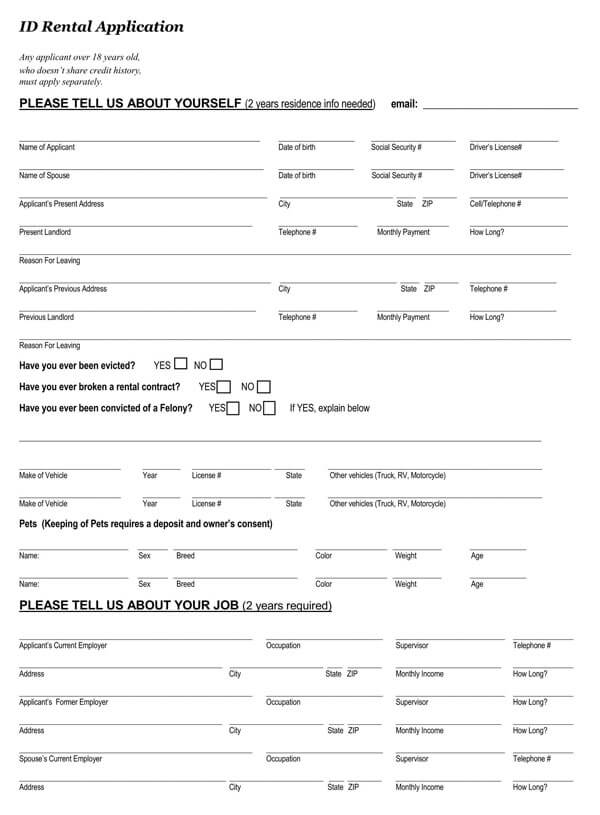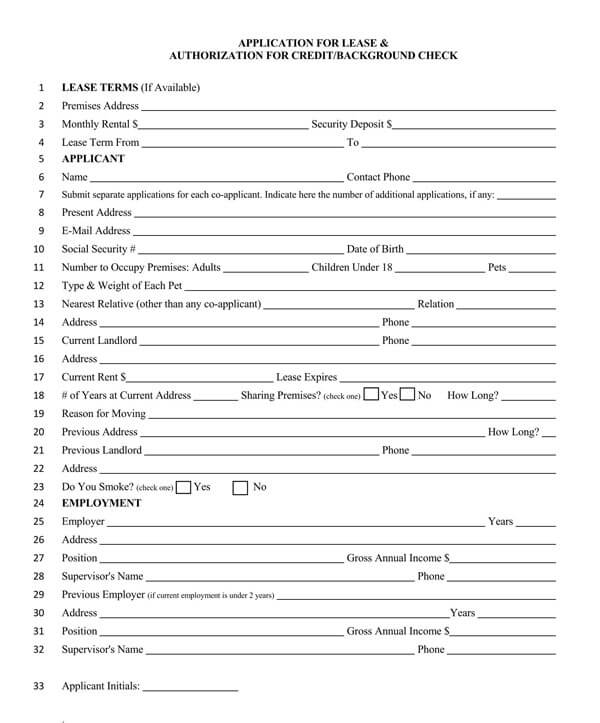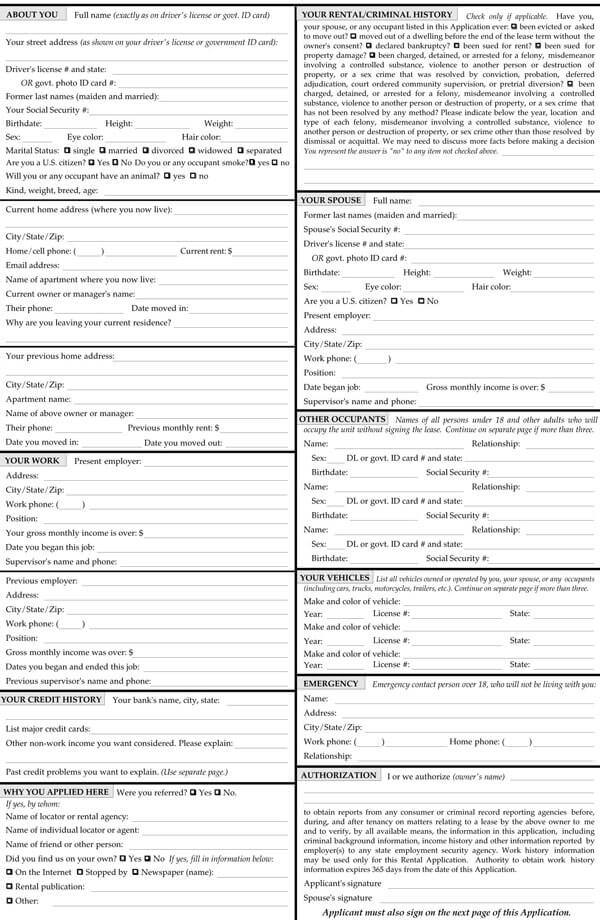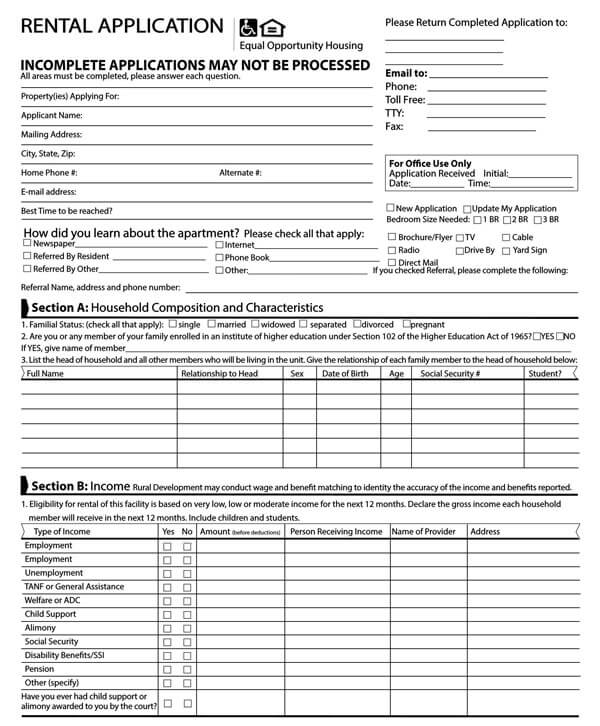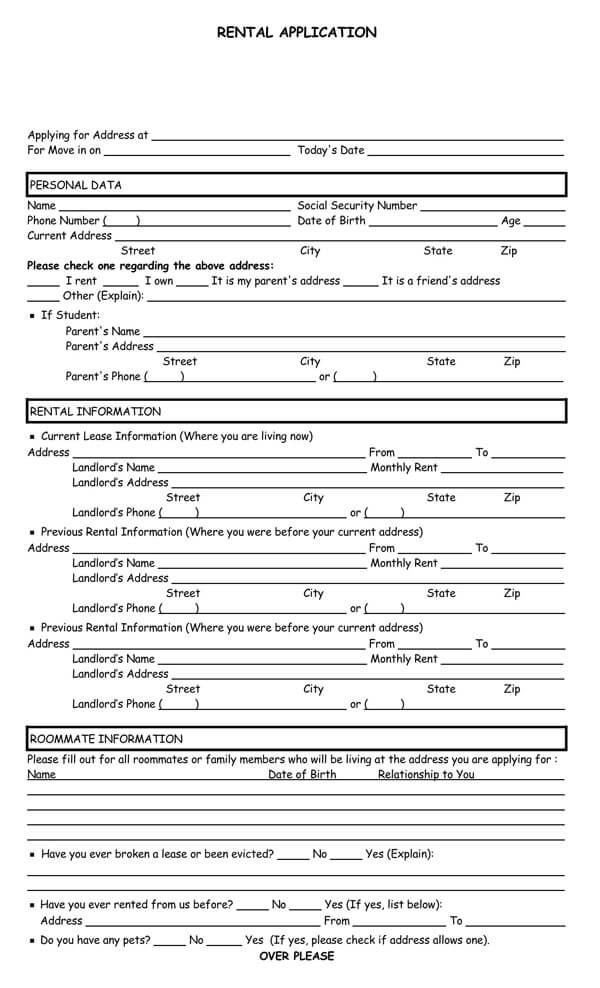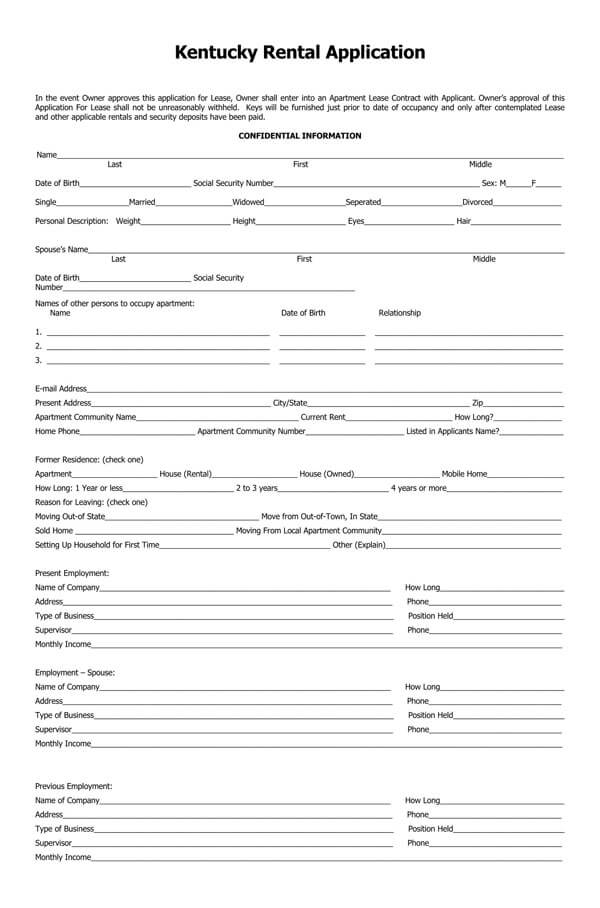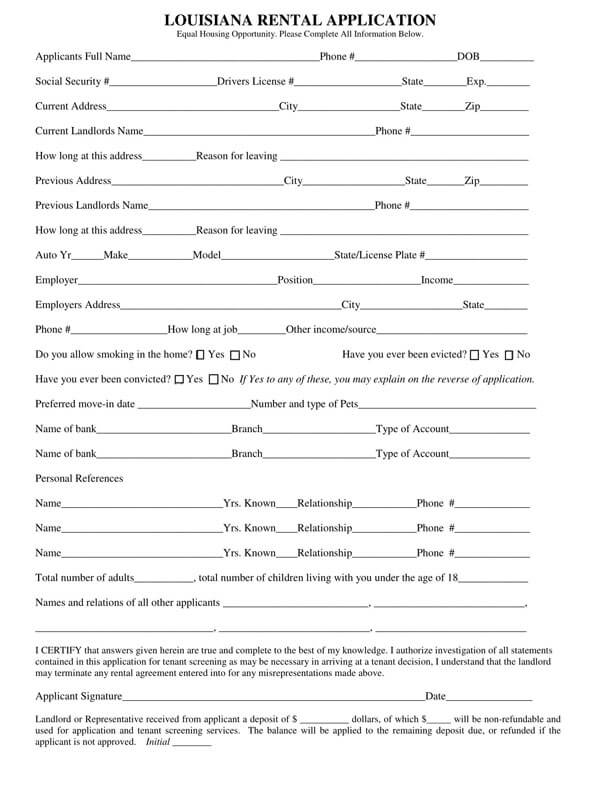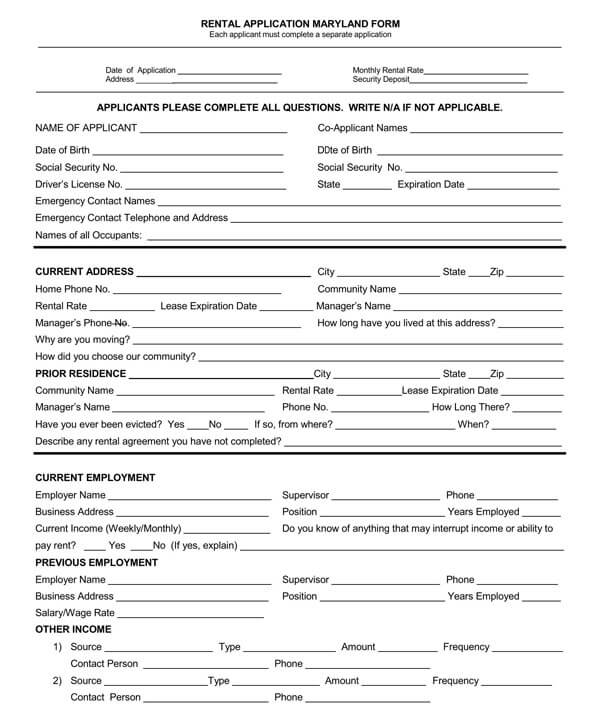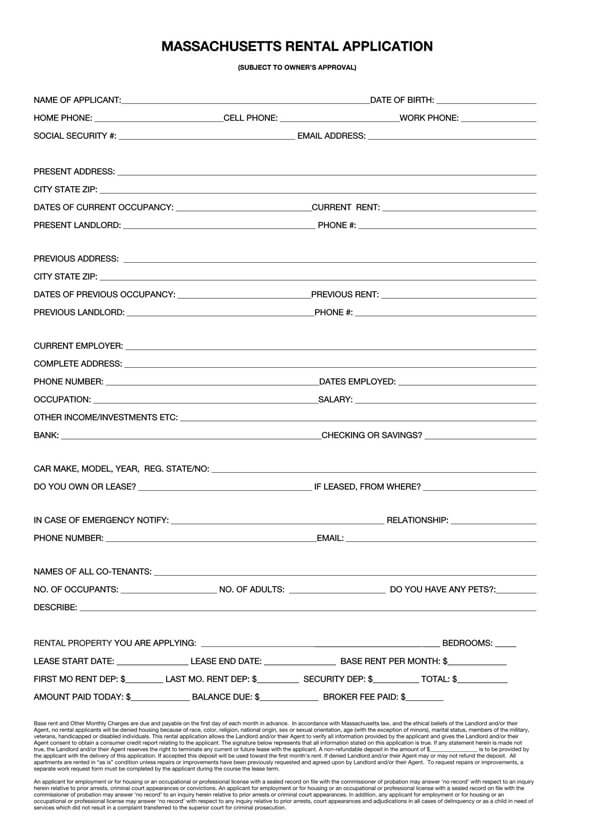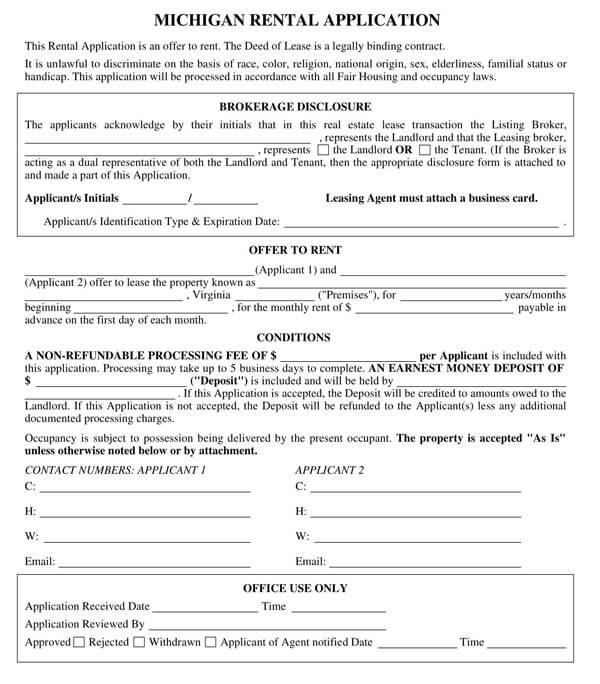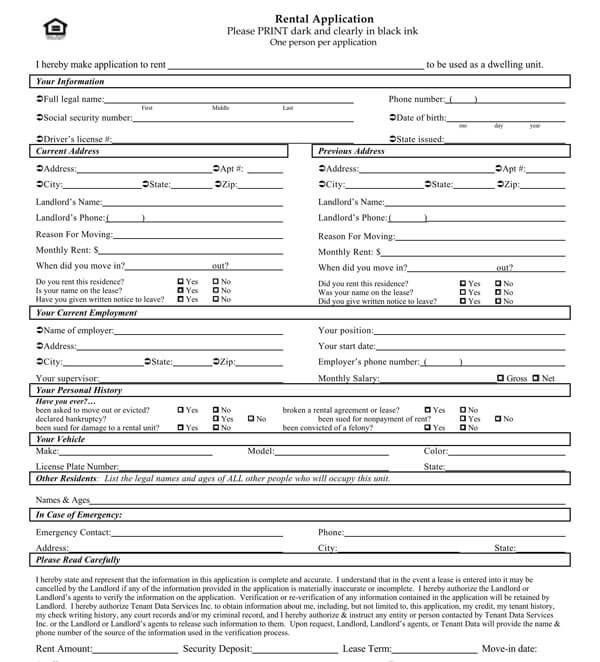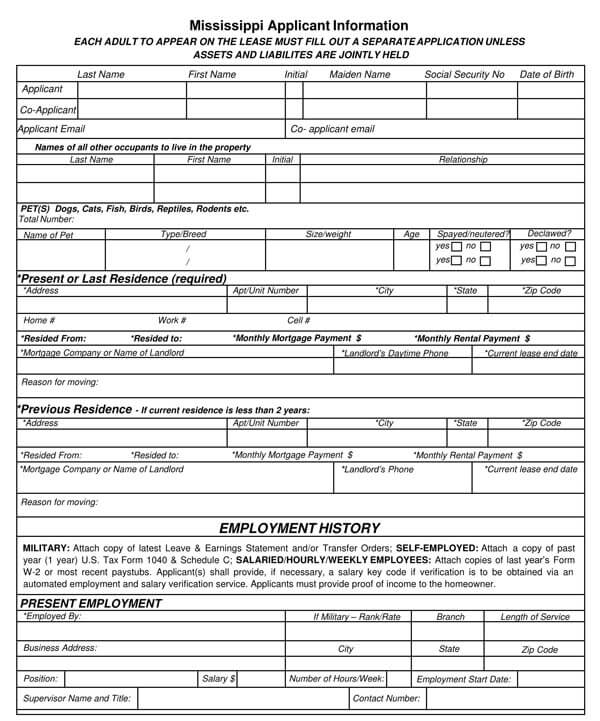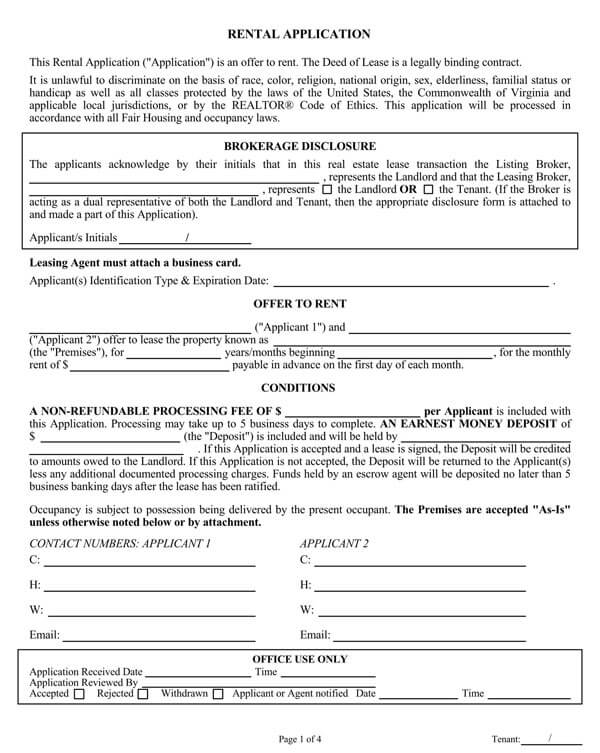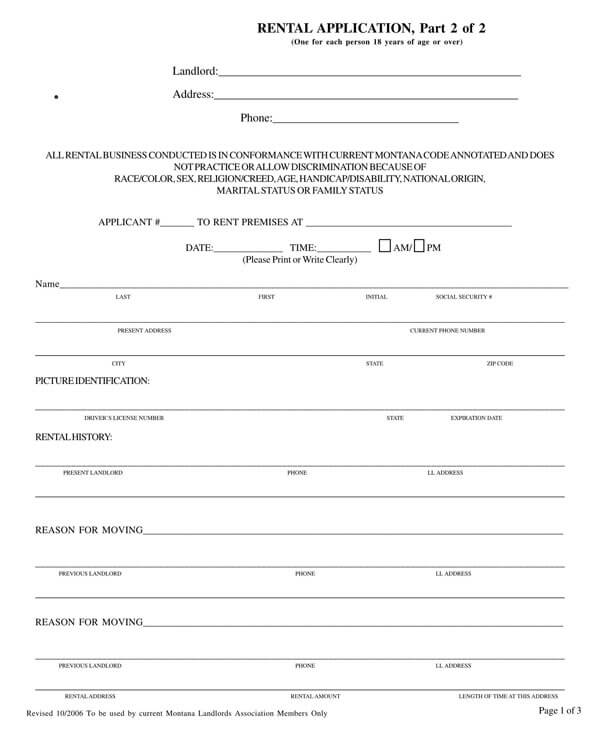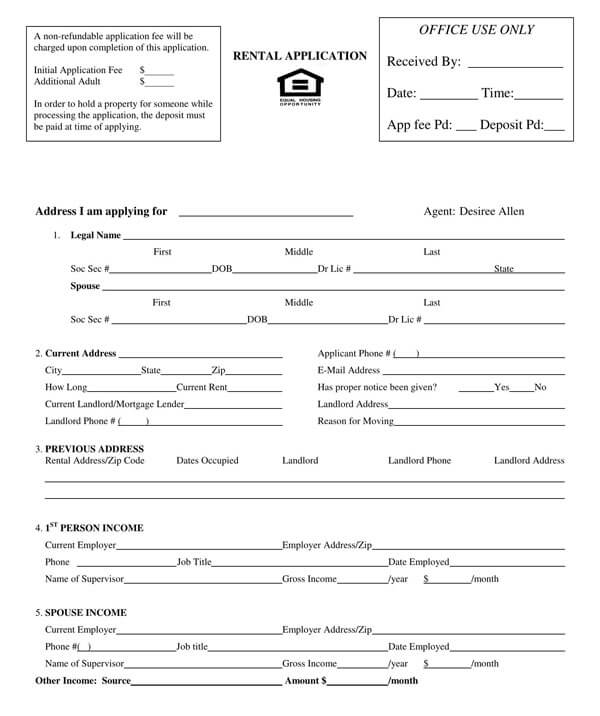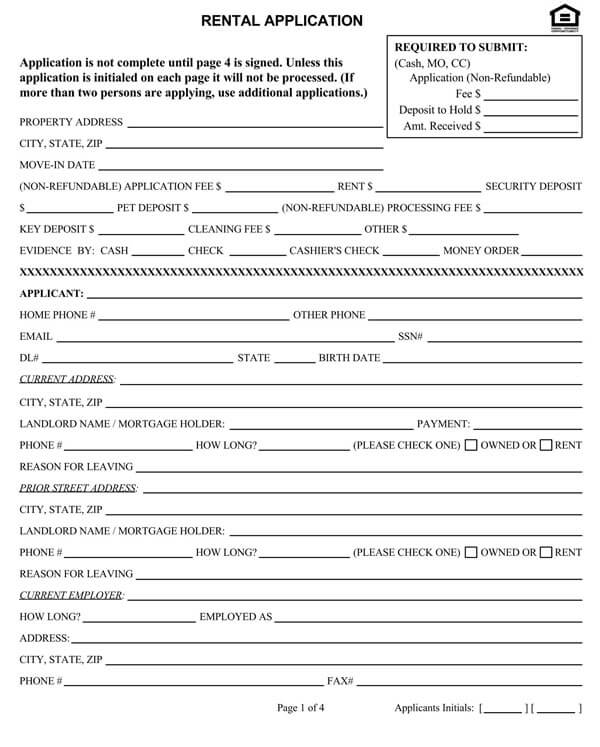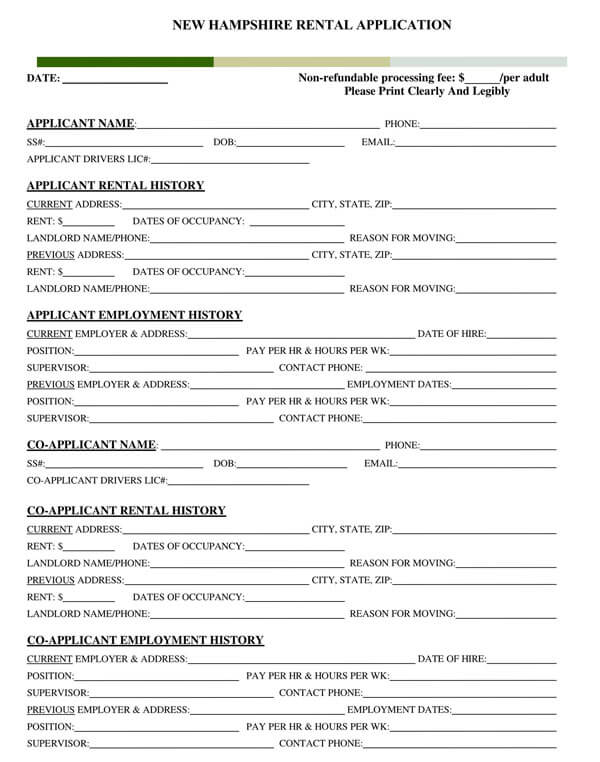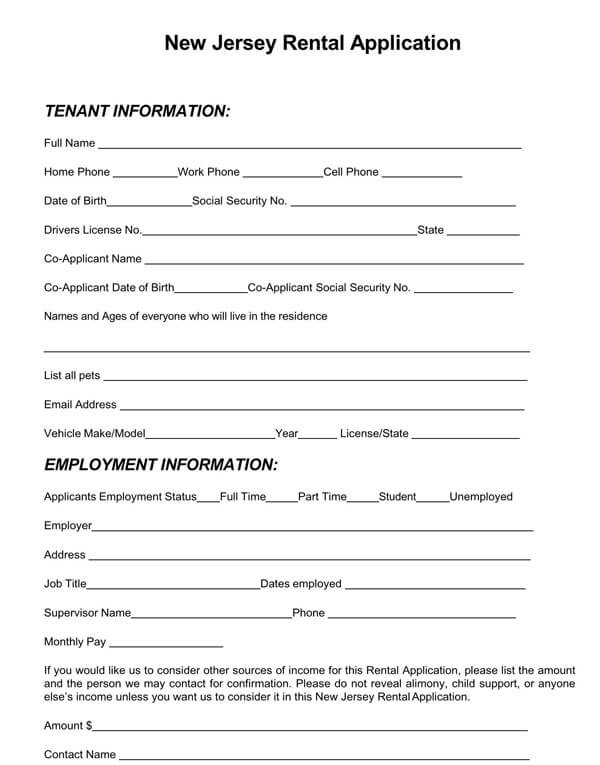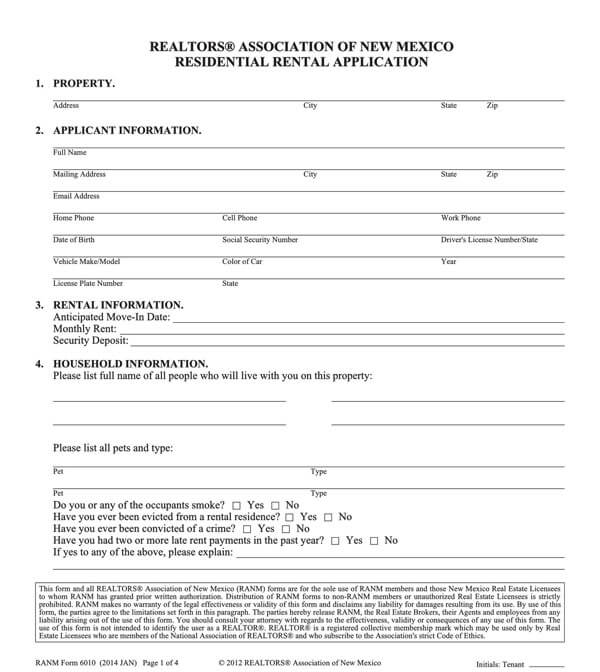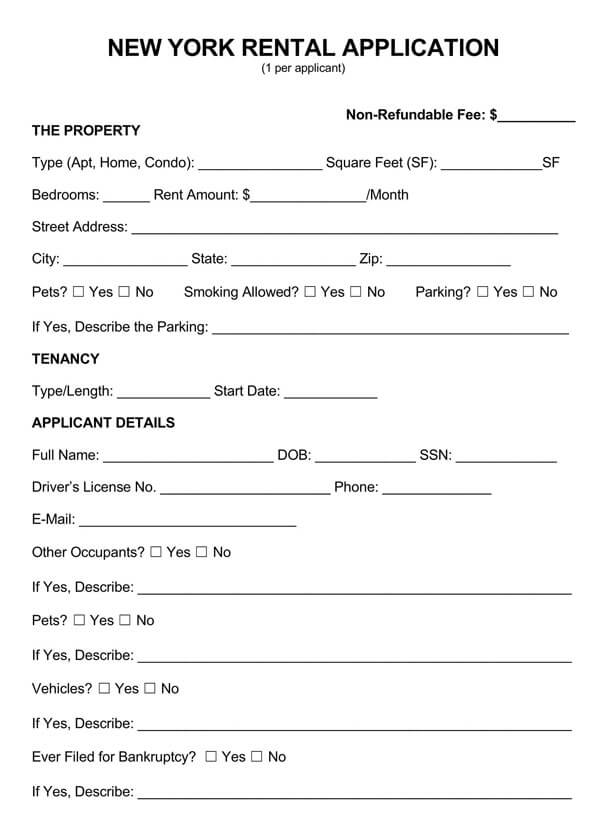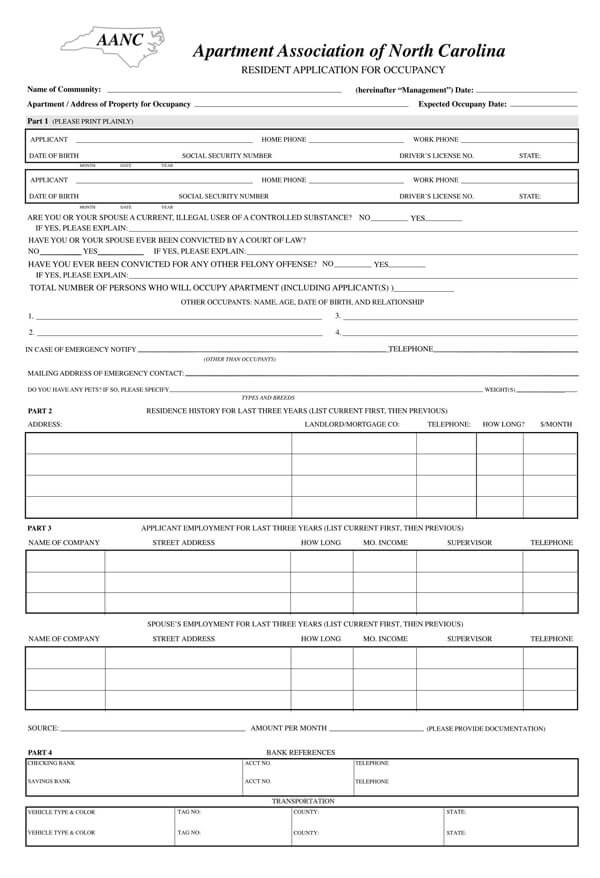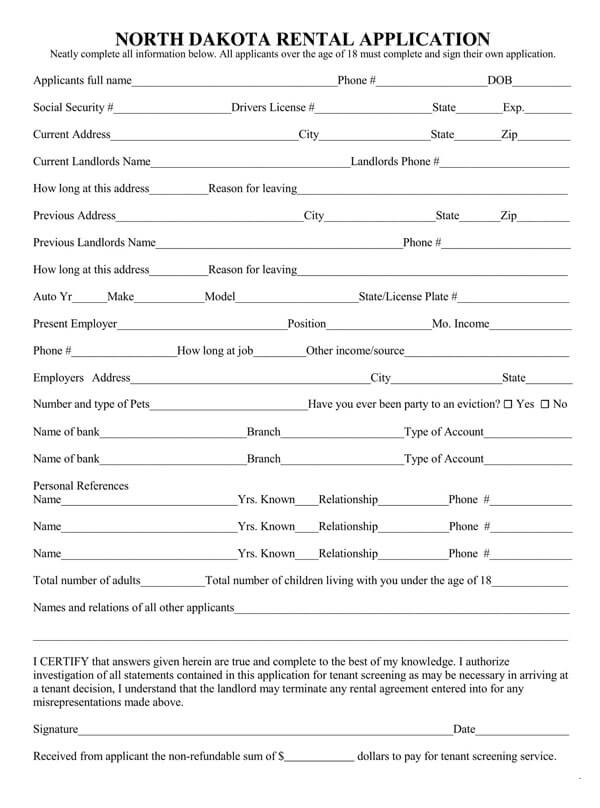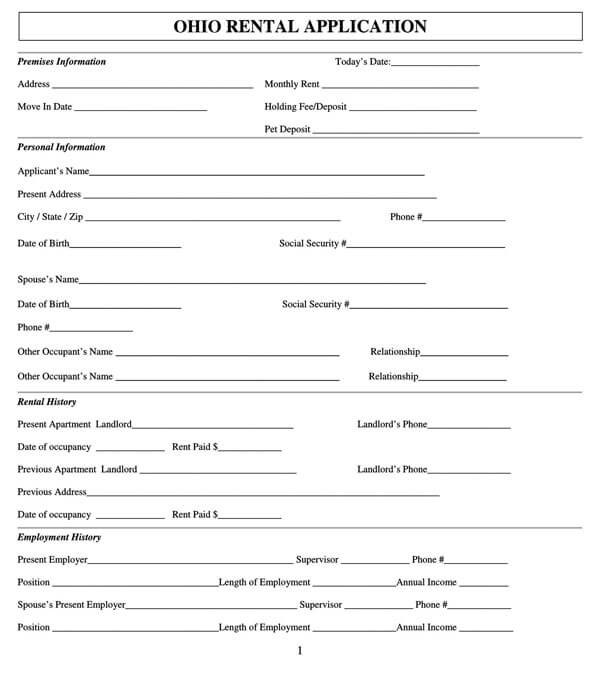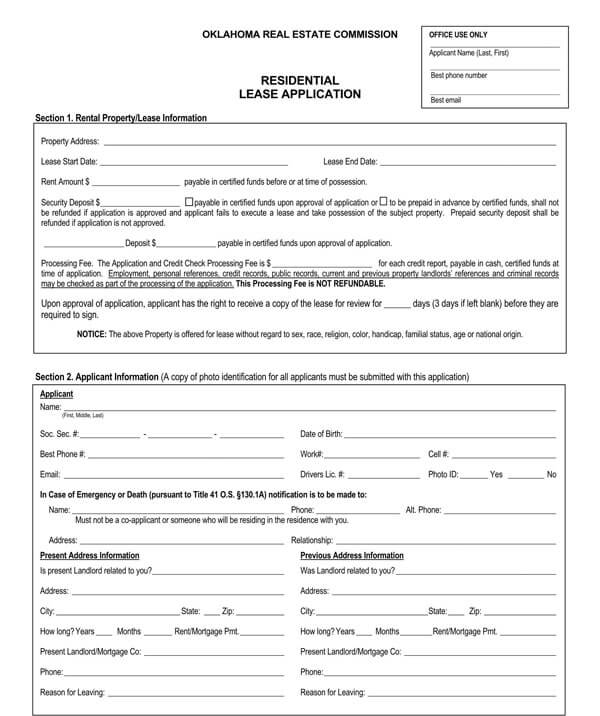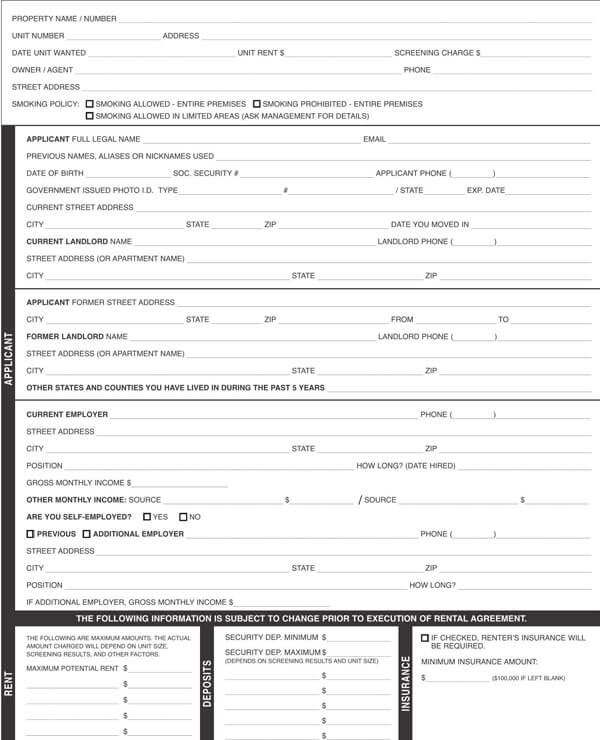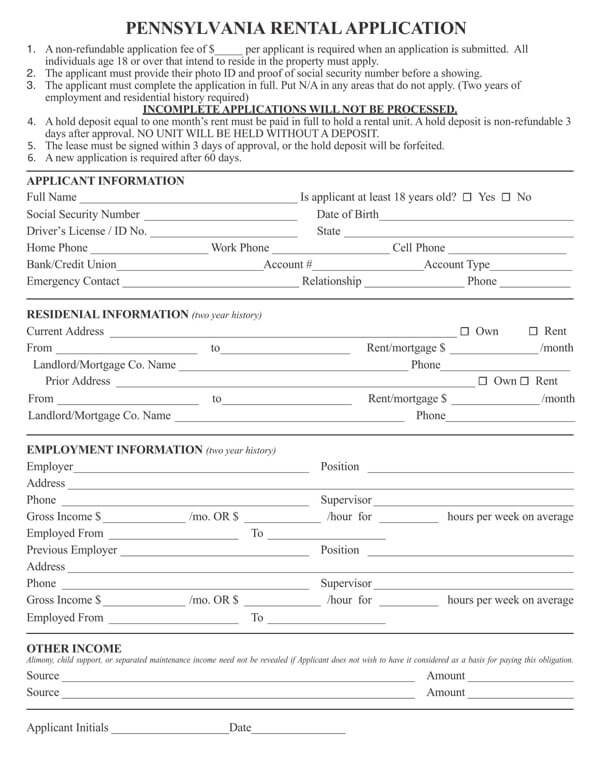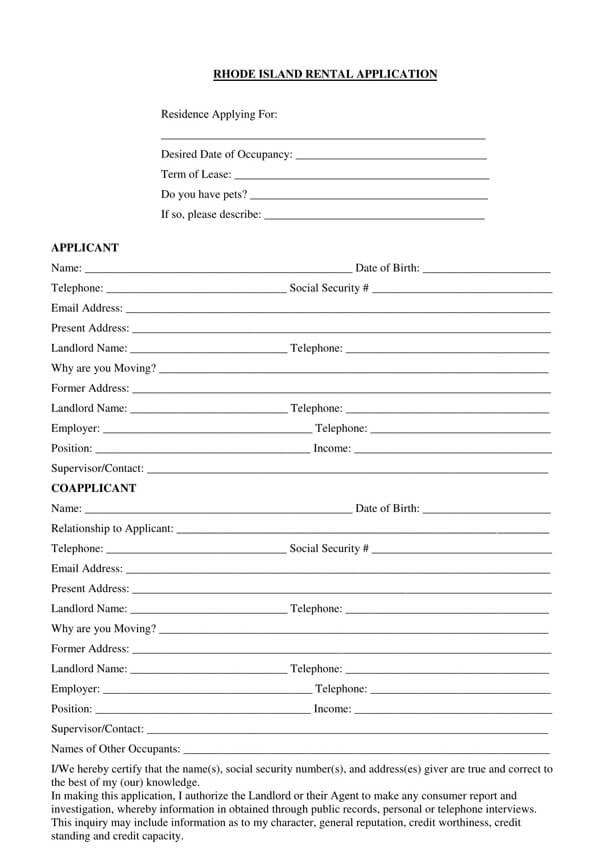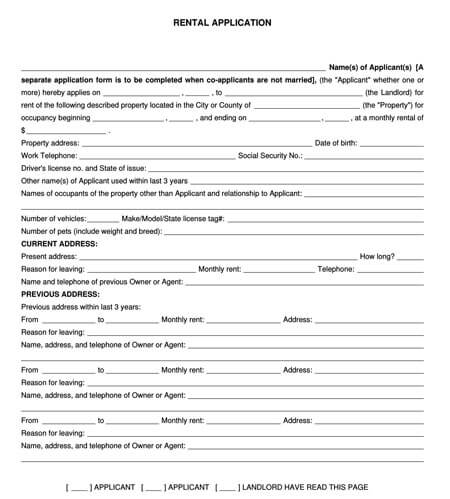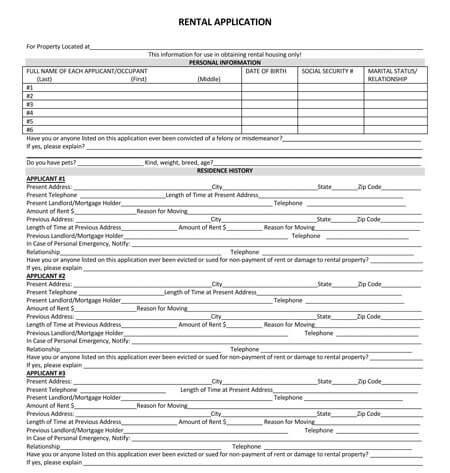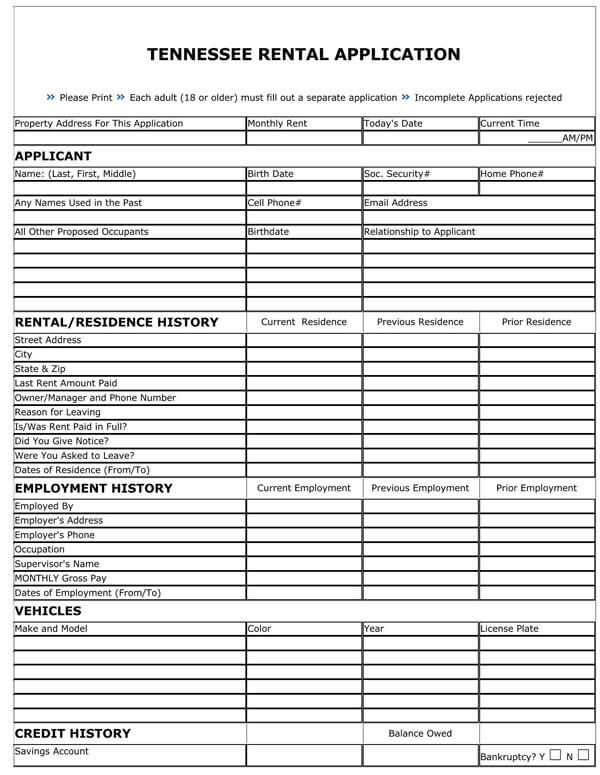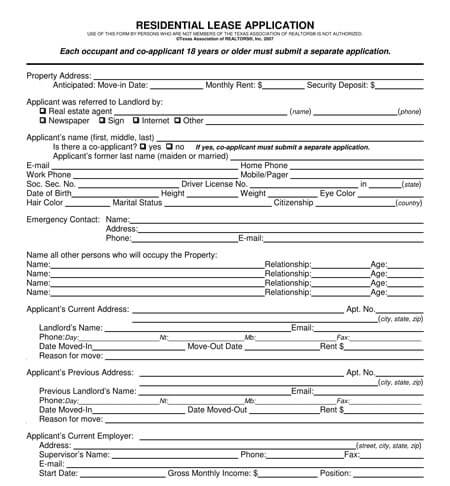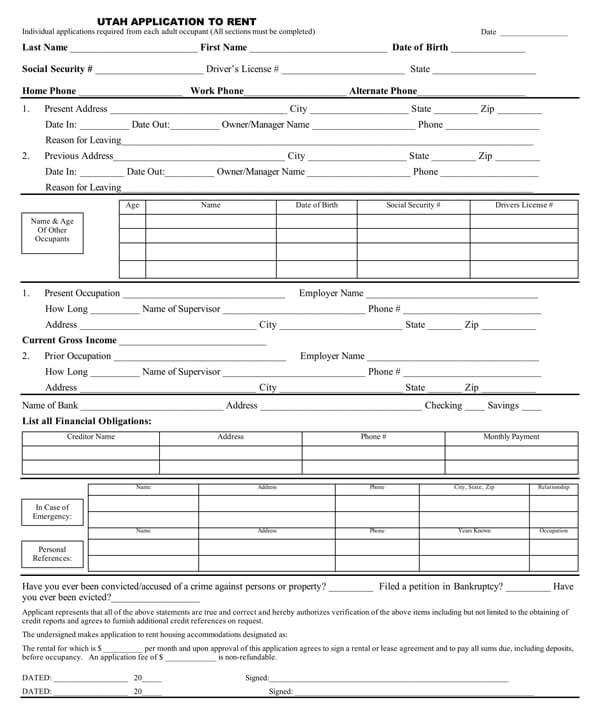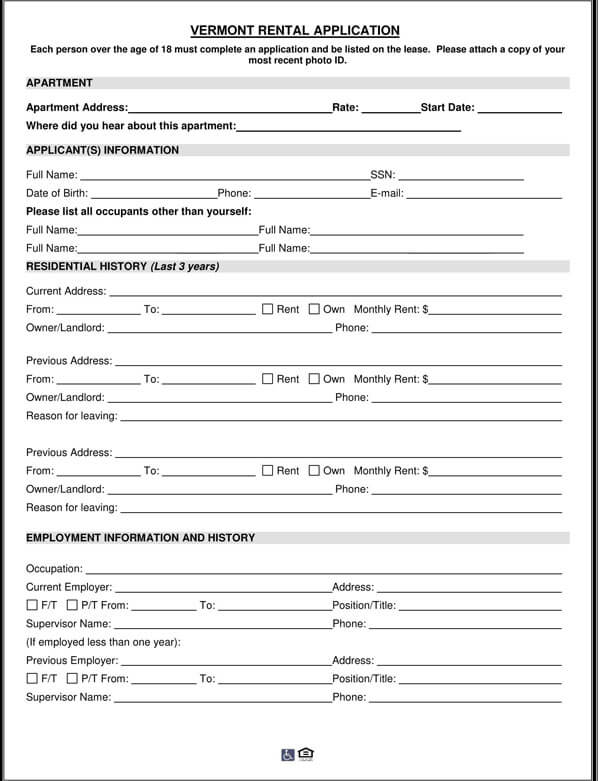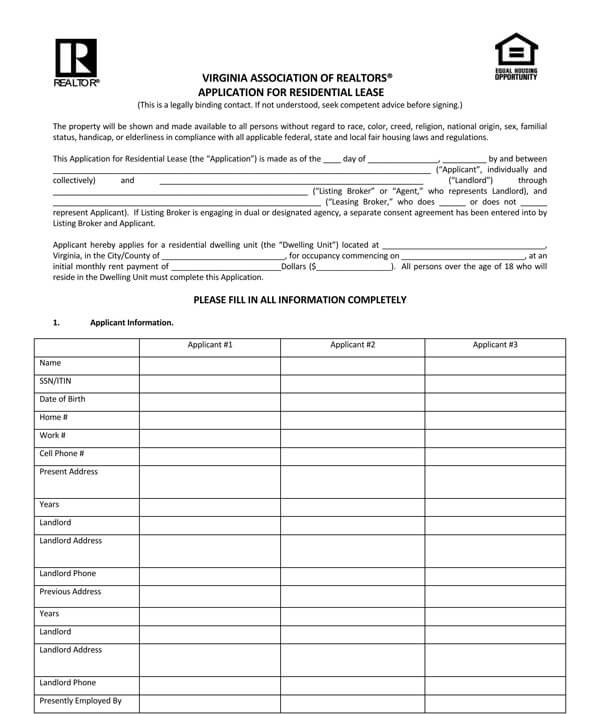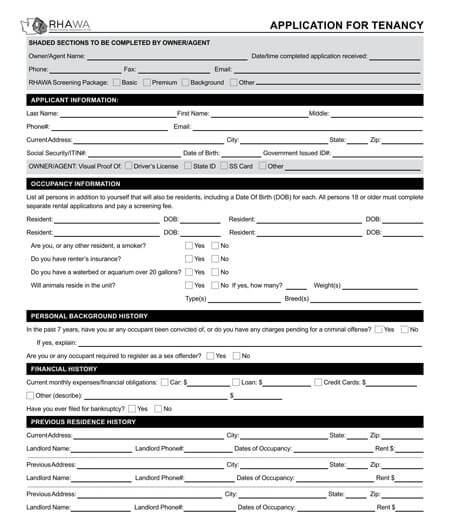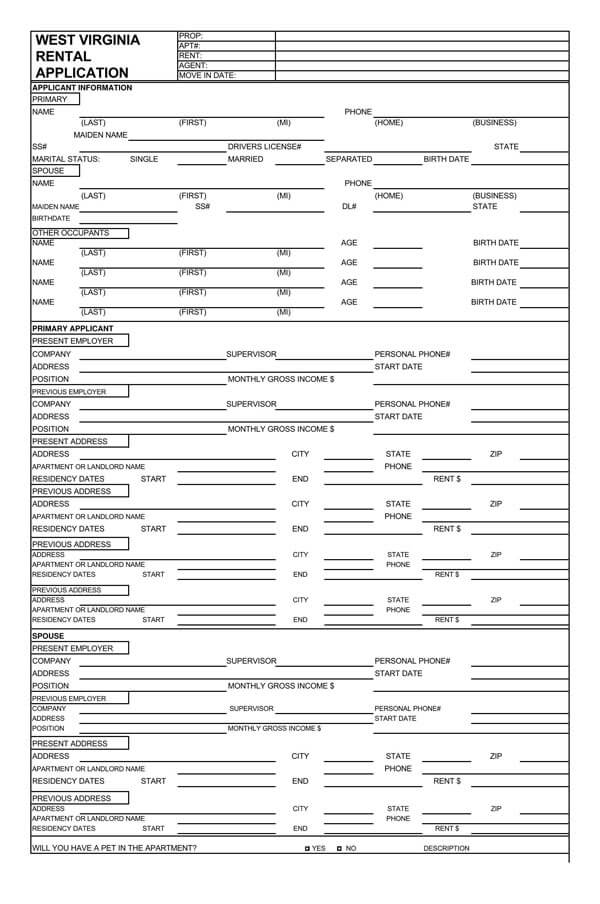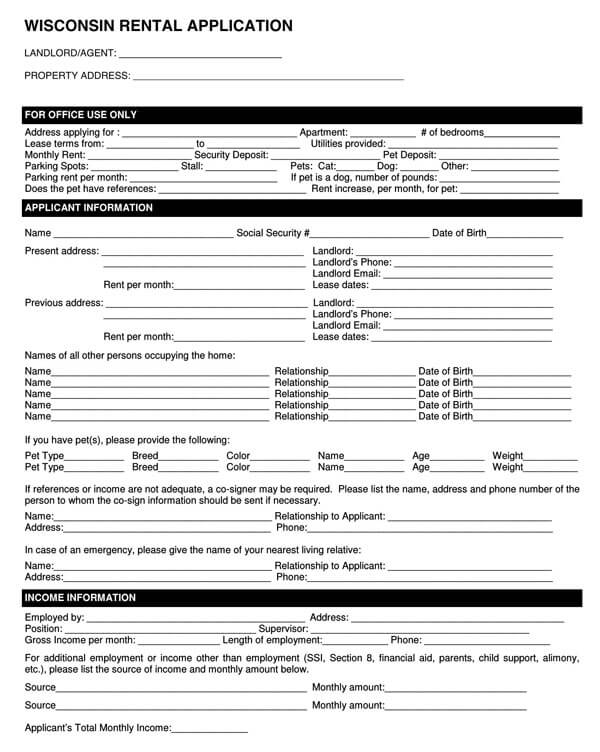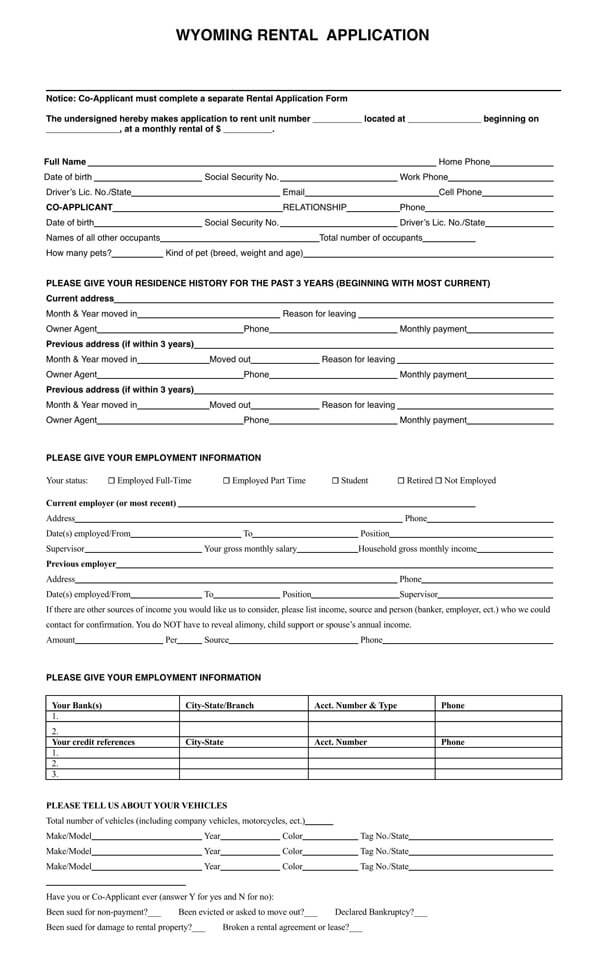Finding the right tenants for your apartment can be a tedious job, especially if you are new in the market. As a landlord, you want to make sure that the tenant renting your property will pay their rent on time and won’t be a problem for the other neighbors. One way to do this is to first screen them before having them sign the lease. To effectively screen all the applicants, it is essential to use a rental application form.
What is a Rental Application?
A rental application form is issued to the potential tenants by the landlords of the property managers during the rental application process. The form is used as a screening tool for potential tenants to decide whether they are fit to rent the property.
Why Do I Need a Rental Application?
The rental application and screening process provides crucial information about the potential tenant’s background and history. By keenly analyzing their income and other financial conditions, you can feel assured that the prospective tenant will be able to pay their rent each month.
Rental Application Process
Every landlord or property owner has their own process that they subject the tenants to when applying to rent their property. However, there are key things that are common in all the processes, including:
- Filling in a rental application form either online on their website
- Filling out a document given directly with the landlord
- Visiting the buildings rental office
- Signing a lease at the time of opening the house
Basic Contents of a Rental Application Form
All rental applications should have the following:
Property and rent information: A rental application form should contain necessary information about the rental space that is being set up for rent. This may include the property’s address in the case of apartment rent, the description of the property, the lease period, etc.
Basic Personal information: The potential tenant will be required to fill in basic personal information like their name, phone number, current address, email address, criminal history, and identification number. The landlord will then use this information to identify the prospective tenant and also to make a decision regarding whether or not to accept their application.
Tenant’s lifestyle habits: Potential tenants have their individual preference about the kind of tenants they would like to reside in their property. For instance, a landlord may detest tenants who hold house parties, drink, or smoke.
Credit and Criminal history: Most landlords and property managers will not rent out their property to notorious creditors or people with criminal records. Those with criminal records are more likely to commit other crimes, putting other tenants and the property managers at the risk of being the recipients.
Employment record: The employment record includes the applicant’s work history and current employment status. This may include the employer’s name, address, employment duration, monthly income, position, and additional income.
Rental record: Having access to access to the rental records of a potential tenant will help you to easily access the moving rate, the previous rent price, and other important information about their previous rental record. This may include information about their current and previous rent, if any.
Emergency contact: The potential tenant’s emergency contact may also serve as the referee or the guarantor in the event of any issues with them. This will enable the property manager to have someone to contact in the event of any issues.
Free Rental Application Forms
As a landlord or a property owner, you are always looking to get the best tenant to stay at your property. The best way to do this is by ensuring that all your potential tenants are screened before signing the lease. To make your work much easier, we have free and premium rental application templates that can help you collect all the crucial information about potential tenants. You can also use the templates provided as a guide to help you draft a great rental application form for all your properties.
Why Use Online Application Forms Over Printable Paper Forms
There are various reasons why you should opt for online rental application forms over printable paper forms. Some of the reasons include:
- Accessibility: with an online application, the tenant can easily access and send in their application from anywhere, anytime as compared to printed paper forms where one has to either download or visit the office to be given the application form.
- Information storage and security: Online applications allow multiple users to key in their details, and their information is stored and backed up in the cloud for easy access and retrieval. The message is also secure as no one can tamper with it compared to printed paper forms.
- Appeal to potential tenants who are physically unavailable: online rental systems enable people from all over to send in their applications regardless of where they are at their convenience.
- Economical: Online applications are economical compared to printed paper forms. The process of buying, writing, sending via mail, or traveling to drop your application is a huge process that requires time and more money compared to online applications.
How to Write (Fill) a Rental Application (as Applicant)
1. Introduce yourself
Start your application by properly introducing yourself and make sure to include the following:
- Your name
- Age
- Occupation
- Number of tenants
- Your reason for moving
- Your income
- Reference to previous employer and landlord
2. Use a customizable template
Download a template that you can easily customize and reuse in different applications. Doing so will save you time and will also make it possible for you to reply faster to rental adverts. However, ensure that you properly customize your template to the specific advert. To do so, ensure that you:Address the landlord by their name if it is provided in the advert Mention a few things that you like about the property and the surrounding neighborhood If there is an important requirement listed in the advert, make sure to address it in your application.
3. Keep it short
Everybody is always busy with something, and no one has all the time to dedicate to reading a rental application-so; keep it short. A great way to review how your rental application looks like is to send it to yourself or your friend. This will give you a hint if there is anything that you need to change or shorten before sending in your application.
4. Timing
Most landlords and property managers normally use the first-come, first-served concept. So replying promptly to adverts is very important. This can, however, be time-consuming but is a great move to getting a rental space.
5. Show genuine interest
Don’t just write, “Hey, is the rental space still available?” as most people will be sending the same message to the landlord. To make your message stand out, try to send an application where you show genuine interest and ensure that you properly personalize the message.
6. Don’t negotiate
Do not try to negotiate the price even before seeing what is being offered. With most people sending in their applications every day, the landlord will have no trouble finding another tenant. If the rental space isn’t within your budget, you should try and look for one that fits your budget.
Tips for Having your Rental Application Approved
Here are some tips to help your rental application be approved much faster:
- Provide all the relevant documents: when sending in your application, make sure that you have included all the required information and that all the requested documents are properly attached.
- Have complete documentation for all your applications: since you will be sending in your application to various landlords, it is important that you go through their requirements and have all the requested documents attached.
- Prove that you will be able to pay the rent: The landlords want to know that you will be able to pay your rent on time without any issues. To prove that you can make your payments on time, you can provide your proof of income or a signed letter from your employer stating that you will be able to afford the rent.
- Secure a guarantor: who will stand in for you should you fail to pay your rent? Most landlords usually want some level of assurance when dealing with tenants. They want to know that in case of anything, they will still be paid on time.
- Write a great cover letter: it is not just enough to fill in the application form and submit it; you want to make a great first impression and have the property manager or the landlord look at your application. To do so, write a great cover letter to accompany your application.
- Have good personal references: For most landlords, what they will look for most are your references. Is there anyone vouching for you? Make sure to include a reference or two in your application.
- Sign the lease: After you have been approved to rent the property, create some time to go and sign the lease. Before signing, however, make sure to go check out the apartment and make sure that everything is in good shape.
- Pay the apartment rental application fee: Most landlords usually set an application fee to filter out serious applicants from random applicants. Make sure to pay the rental application fee to show that you are serious and ready to move in.
Conclusion
Apartment hunting can be both exciting and frustrating at the same time, especially if you apply for several apartments, and you are not getting any feedback. Drafting a great rental application might help you get that rental apartment that you have always wanted. Besides drafting a great application, it is important that you also plan and be prepared to maximize your chances of getting approved and compare the different renters’ insurance policies early enough so that you will have one lined up if your potential landlord needs it before you can sign the lease.
